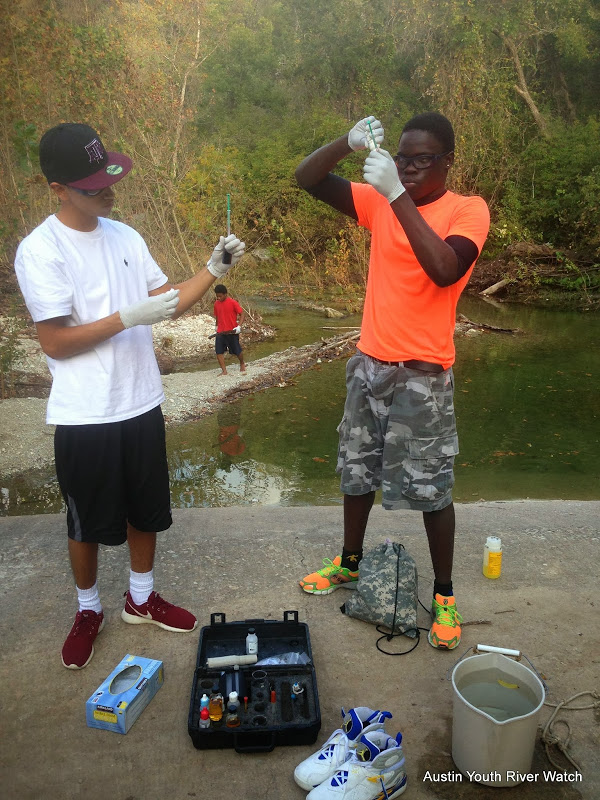One Stream at a Time
In Central Texas water is a big deal, especially in the summer when the temperatures start to climb. For many, respite is found in the cool waters of nearby swimming holes, many of which are fed by creeks and streams and springs that feed into the Colorado River. The quality of these waters is important, and keeping a close eye on them takes the work of many, including a number of teenagers from Austin high schools.
Partnering with nine Austin high schools, Austin Youth River Watch works with teenagers to teach them to be environmental stewards through holistic youth development activities that focus on academic and environmental success. Students, known as River Watchers , work in teams of 10, each visiting one of 25 stream and river sites around the city to conduct a number of water quality tests and report their findings to the City of Austin and the Lower Colorado River Authority (LCRA). The collected data is published online as part of a wider water quality database maintained by the LCRA for use in tracking long-term trends in water quality.
Starting this fall, River Watchers will begin work on 10 stream improvement sites helping to increase ecosystem diversity and drought  resistance, bank stabilization, and trail building. These stream improvement projects will take place after school hours and will include a student-led weekend work day with community volunteers. In addition to the students in the school year program, nearly 30 more students will participate during the summer.
resistance, bank stabilization, and trail building. These stream improvement projects will take place after school hours and will include a student-led weekend work day with community volunteers. In addition to the students in the school year program, nearly 30 more students will participate during the summer.
Scientists from the City of Austin’s Watershed Protection Department will offer Austin Youth River Watch staff and students training in stream restoration strategies, and they will help prioritize stream and river areas that need the most help and are also the best fit for students’ projects. It’s a powerful experience for students to take the lead on enhancing, restoring, and maintaining stream and river areas throughout watersheds in the Austin area.
Every participating student will work in a small group to plan, execute, and evaluate at least one project per year. Together, these efforts will result in a minimum of 10 projects per year benefitting Austin-area streams and the ecosystems they support. Following each project, students will continue to monitor various water quality indicators including nitrates, temperature, conductivity, dissolved oxygen, turbidity and pH. Students will also monitor vegetation growth as relevant to each project. As a function of this work, students will learn about riparian ecology, habitat functionality, and stream restoration.
With 120 students each year, Austin Youth River Watch boasts a near 100% graduation rate. Each student averages 14 hours a month working on River Watch activities, including skill building in other academic subjects and preparing them for real world success beyond high school and their time with Austin Youth River Watch.
So will Austin’s youth save the planet? Maybe so! On July 29th Austin Youth River Watch is hosting A Community Forum on Austin Teens and the Environment to help answer the question of what support our teenagers need to become life-long environmental stewards. If you’d like to learn more about Austin Youth River Watch’s work , try attending one of their interactive Next Steps programs for a chance to meet some of the students as they work.
